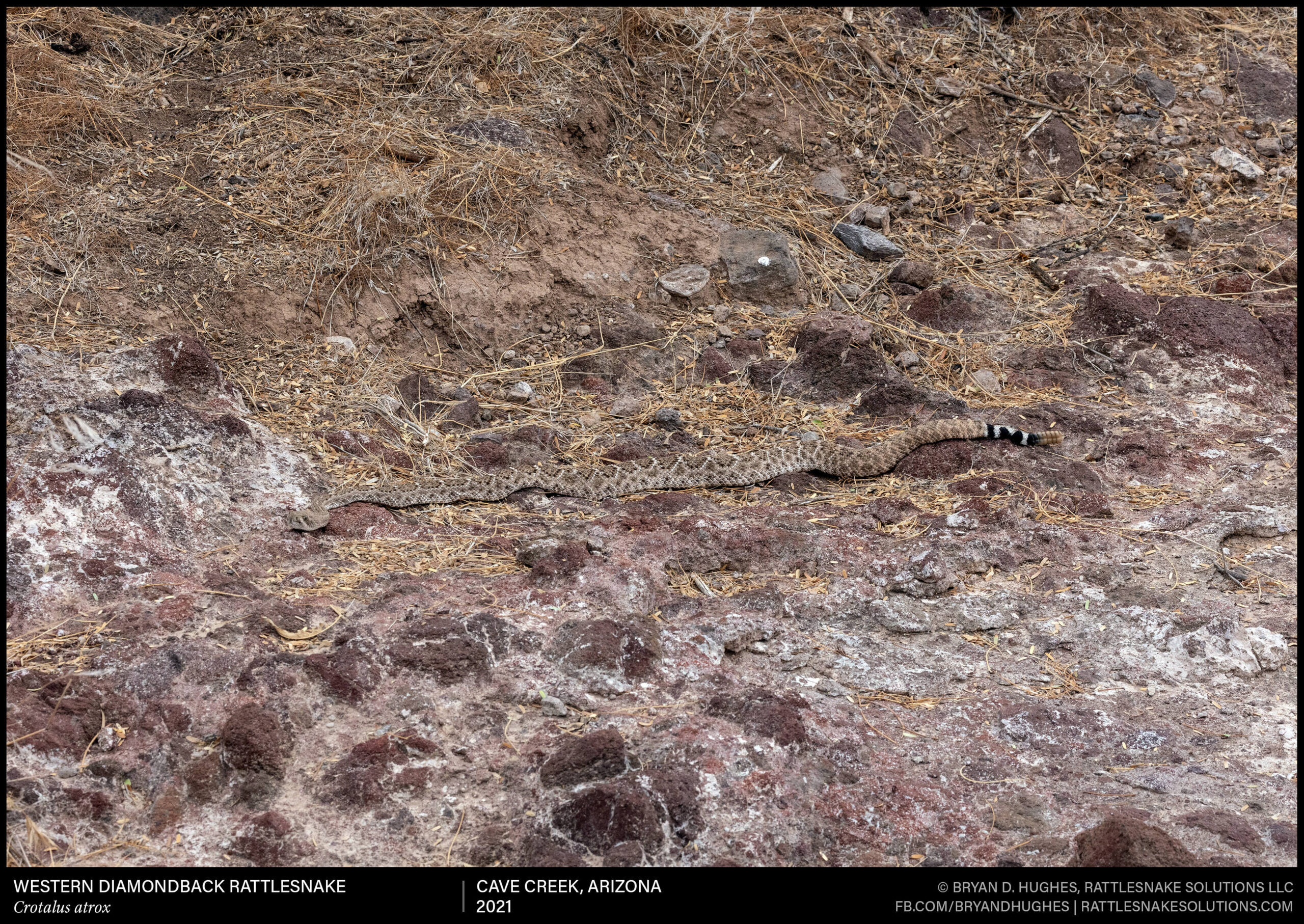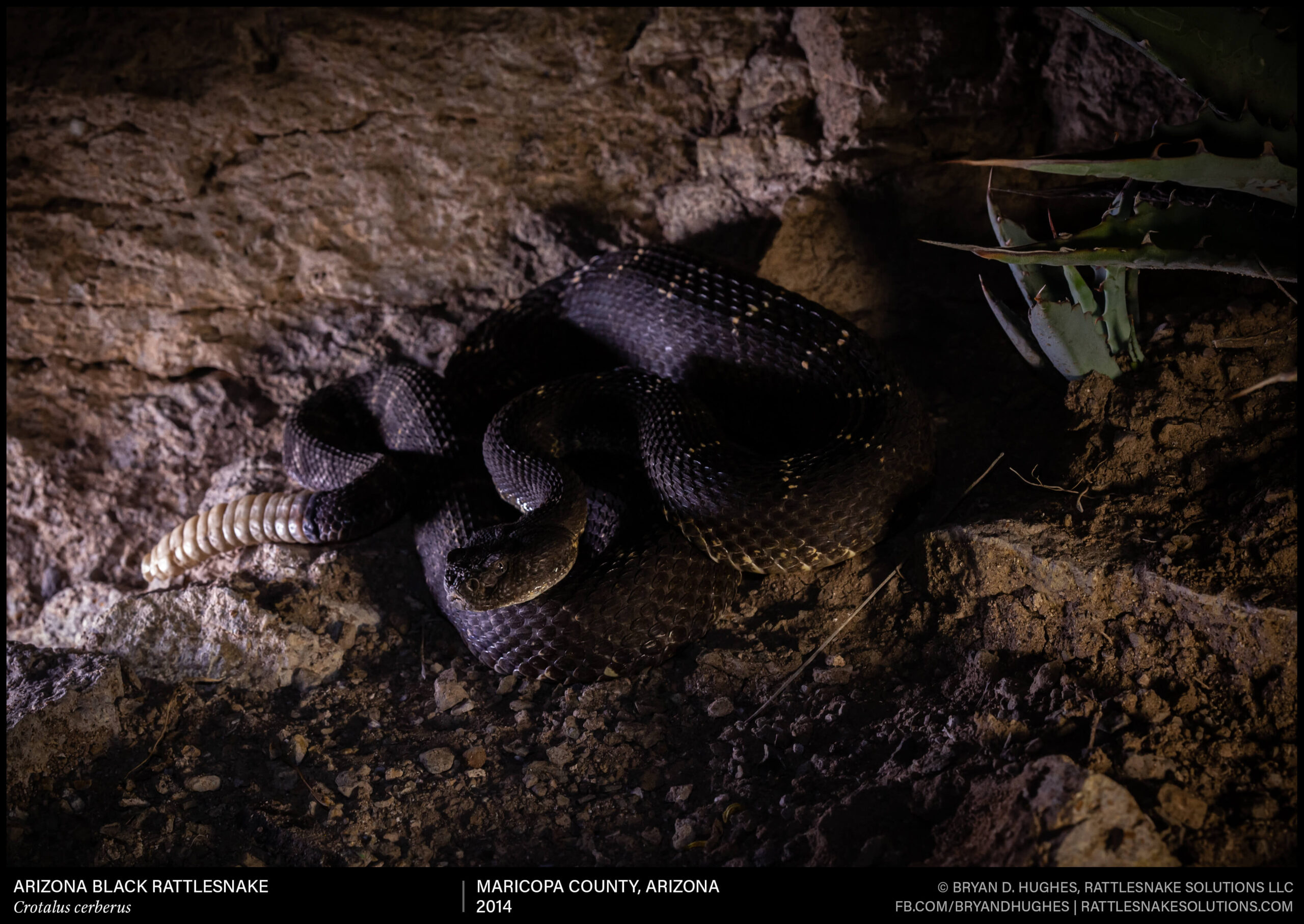A Western Diamondback Rattlesnake cruising along a dry wash on a hot summer evening. Nearby water means a higher number of rattlesnakes in the area, and they can be found each evening moving to and from the spring. Not only good for a drink; these situations are ideal hunting opportunities for prey who also need it.










